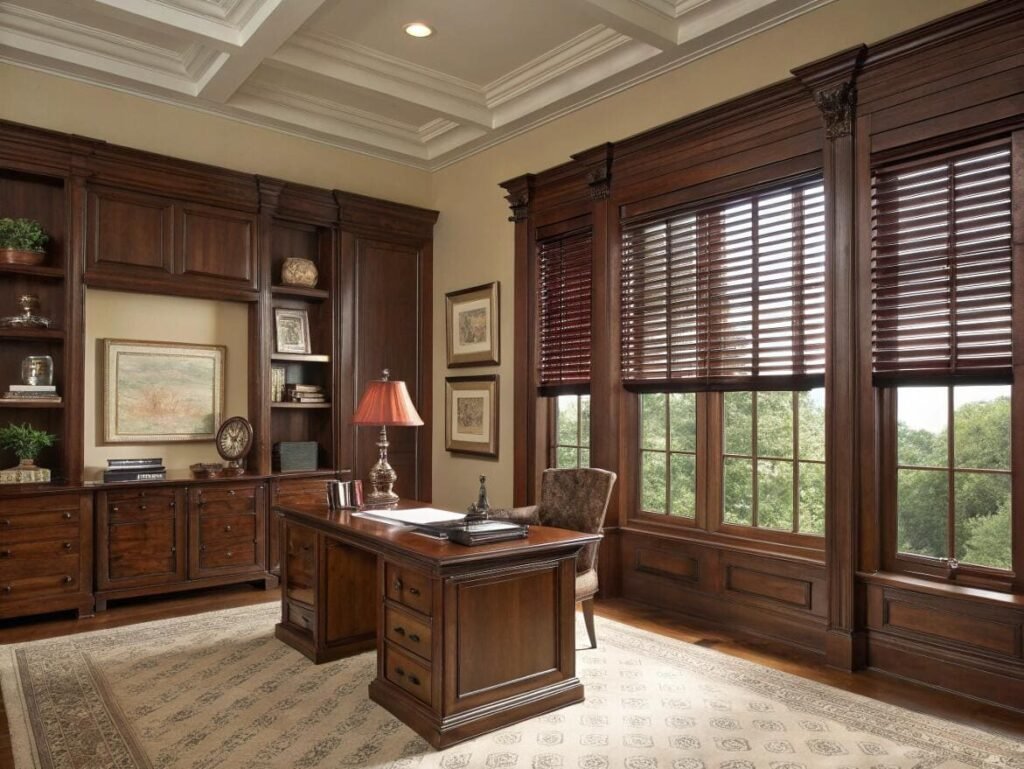You love the classic, warm look of wood blinds, but you're not sure if real wood or the faux wood alternative is the better choice. Making the wrong decision could lead to warping or fading.
Real wood blinds offer an authentic, lightweight elegance perfect for living rooms and bedrooms. Faux wood blinds provide superior durability and moisture resistance, making them the engineered solution for high-humidity areas like kitchens and bathrooms. The best choice depends entirely on the room's environment.
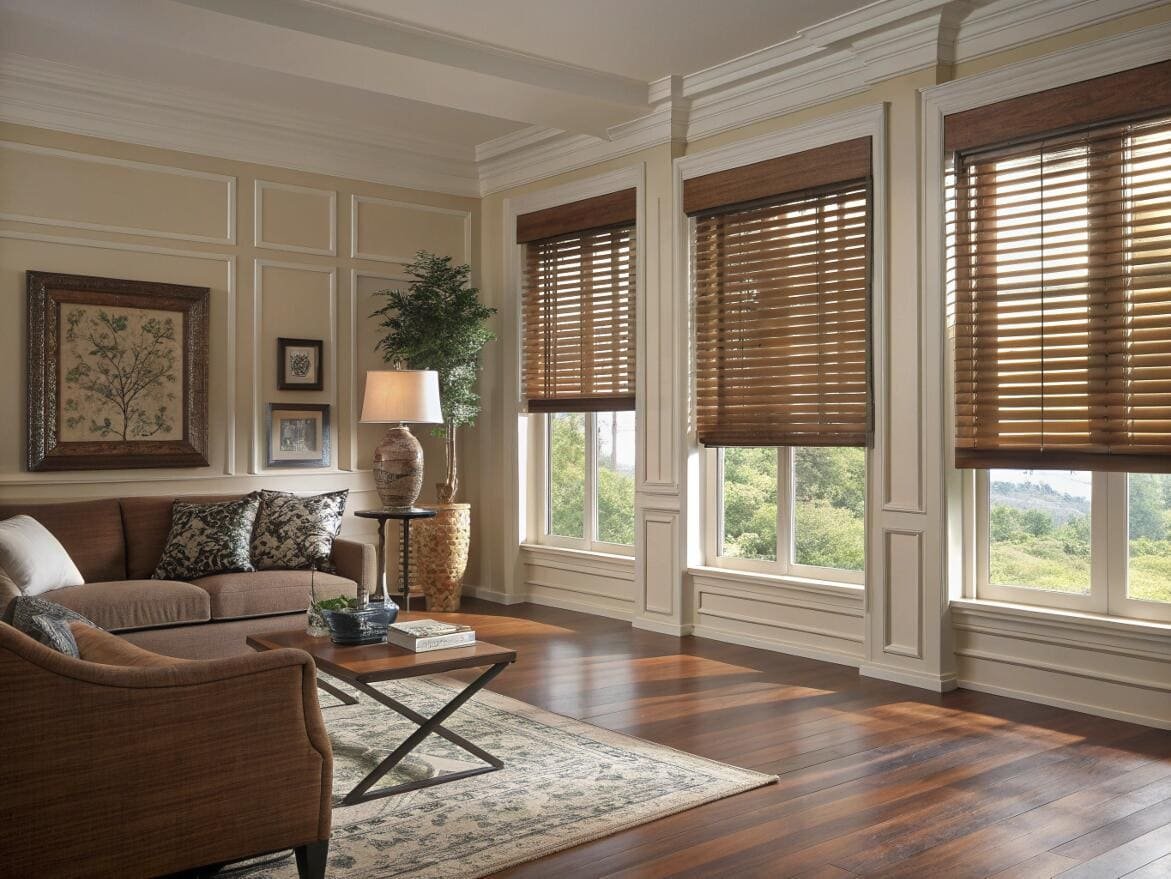
When I consult with designers and project contractors, our conversation about materials has evolved. We've moved beyond a simple "real versus fake" debate. Now, we approach it as a matter of "life environment adaptation engineering." This means we analyze the specific demands of each space—humidity, sunlight, window size, and daily use—to select the material that is scientifically best suited to perform in that environment over the long term. Let's break down this engineering approach to help you make the most durable and beautiful choice for every window.
Should I get wood or faux wood blinds[^1]?
You're trying to decide between the natural beauty of real wood and the promised durability of faux wood. You need to know which material is fundamentally better suited for your project's specific needs.
Faux wood is the better choice for high-humidity areas like kitchens, bathrooms, and laundry rooms. For primary living areas like living rooms and bedrooms where ambiance is key, the lighter weight and authentic grain of real wood is superior.
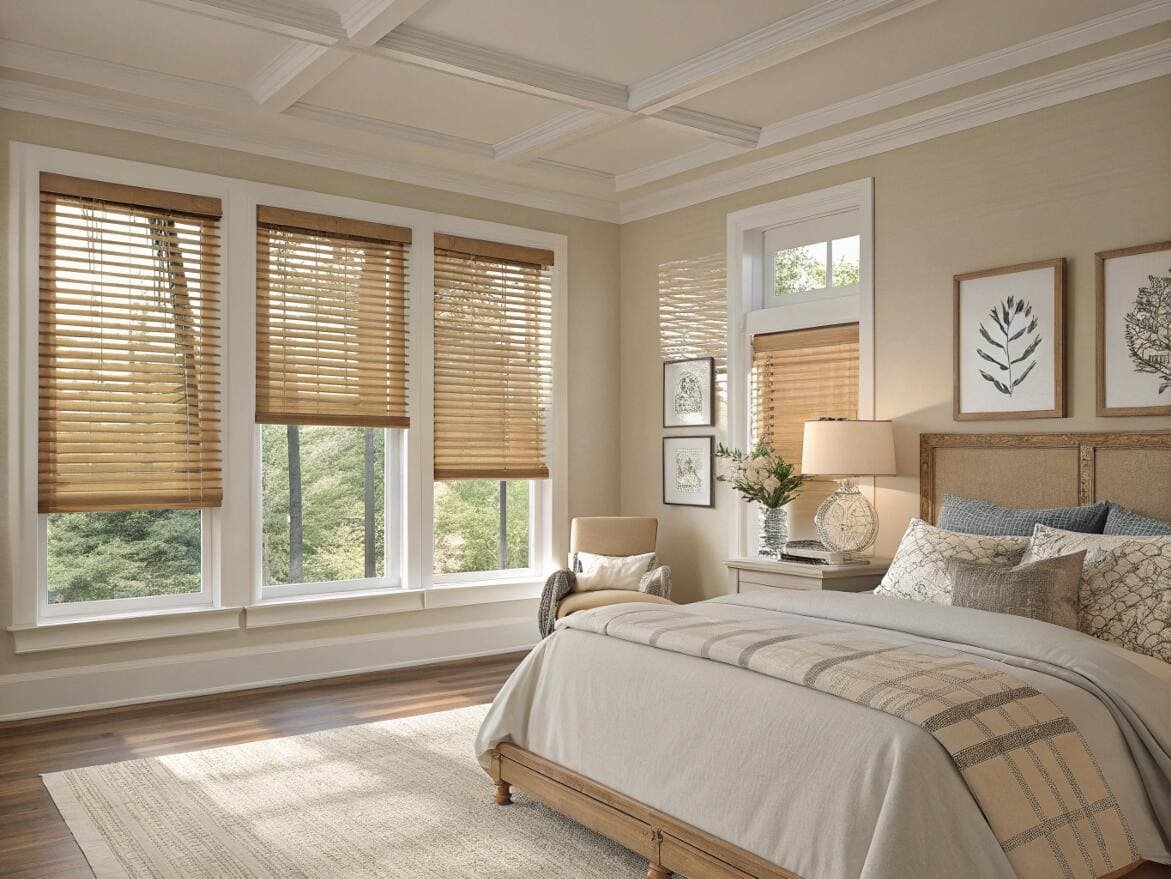
The best way to decide is to think about the environment. Real wood, typically Basswood[^2], is a natural material that can absorb moisture. In a steamy bathroom, this can lead to warping, bending, or cracking over time. Faux wood, on the other hand, is a PVC-based composite material that is completely waterproof. You can splash it, expose it to steam, and simply wipe it down without any fear of damage. This makes it the clear engineering choice for any room with moisture. Conversely, in a dry living room, the authenticity and warmth of real wood cannot be matched. To tell them apart, look at the grain. Real wood has a unique, varied grain pattern on every slat. Faux wood has a uniform, repeating texture.
Are wooden blinds worth it?
You see that real wood blinds[^3] come with a higher price tag. You need to know if this cost is a worthwhile investment that adds tangible, long-term value to your property.
Yes, in the right spaces, real wood blinds are an excellent investment. They are often considered "furniture for your windows," adding a level of quality and craftsmanship that can increase a home's perceived value. Their lighter weight also improves functionality on larger windows.
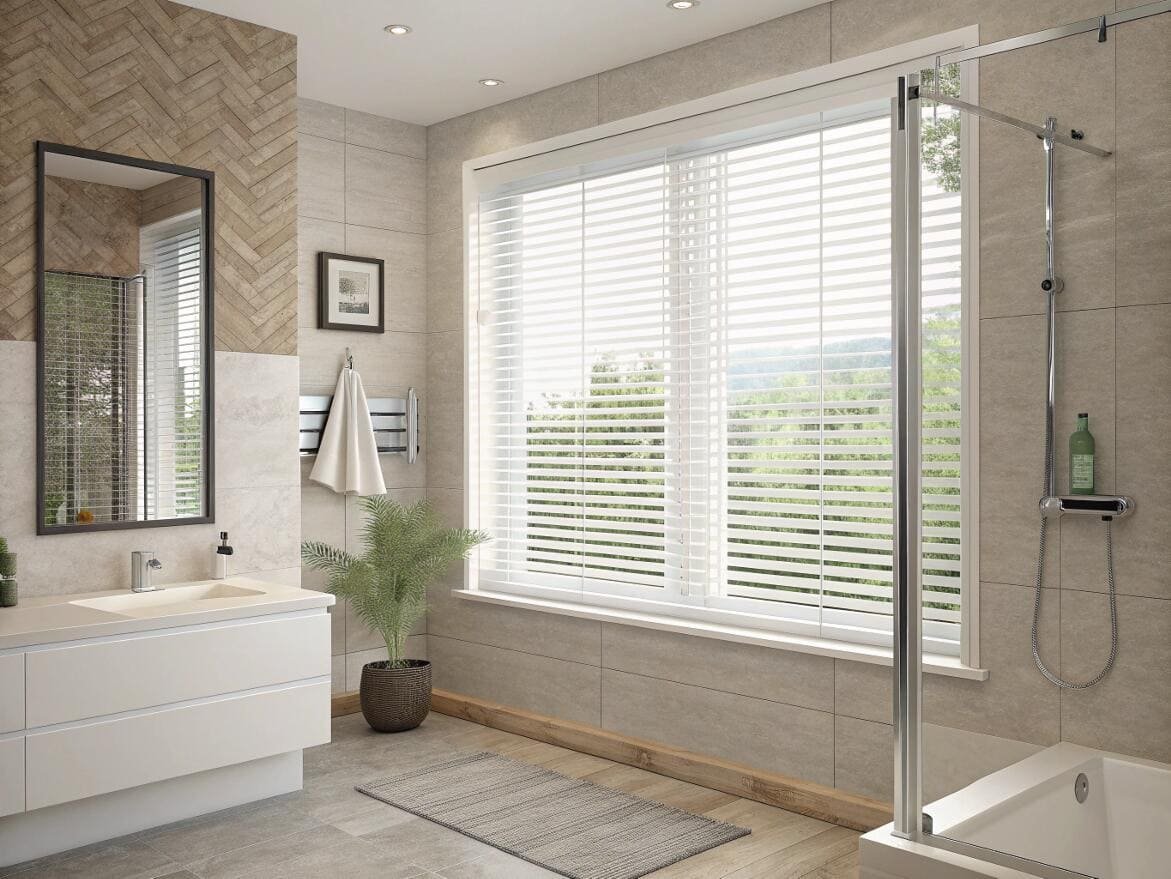
While faux wood is cheaper, the value proposition of real wood is different. It’s an investment in aesthetics and function. When potential buyers see real wood blinds, they see a commitment to quality materials throughout the home. There's also a significant performance difference: real wood is much lighter than faux wood. A large faux wood blind can be surprisingly heavy and difficult to lift day after day. The lighter real wood blind operates more smoothly and puts less strain on the internal lift mechanisms, contributing to a longer, more reliable service life. This combination of elevated style and superior performance is what makes them a smart investment for key areas of a home.
What are the disadvantages of each material?
You understand the main benefits, but every material has a downside. You need to know the potential problems with both wood and faux wood to avoid a costly mismatch in your home.
The main disadvantage of real wood is its vulnerability to moisture and humidity, which can cause permanent damage. For faux wood, the primary drawbacks are its heavy weight, which makes large blinds cumbersome to lift, and the potential for lower-quality versions to yellow over time.

Knowing the limitations is key to successful specification. With real wood, the rule is simple: keep it out of wet environments. For faux wood, the weight is a real consideration. For an especially wide or tall window, I often advise clients to consider the operational difficulty of lifting a heavy faux wood blind daily. Regarding yellowing, this is a concern with cheaper, non-UV-stabilized faux wood blinds exposed to intense, direct sunlight for years. High-quality faux wood blinds are manufactured with UV inhibitors[^4] that protect against yellowing, ensuring they stay white for their expected lifespan of 7-10 years. As for privacy, both materials are opaque. When the slats are closed, neither can be seen through at night.
Material Performance Breakdown
| Feature | Real Wood Blinds | Faux Wood Blinds |
|---|---|---|
| Best For | Living Rooms, Bedrooms, Offices (Dry Areas) | Kitchens, Bathrooms, Laundry Rooms (Wet Areas) |
| Primary Advantage | Authentic beauty, lightweight, premium feel. | 100% Moisture-proof, durable, budget-friendly. |
| Primary Disadvantage | Can warp, crack, or bend in high humidity. | Very heavy, can be difficult to lift on large windows. |
| Weight | Lightweight and easy to operate. | Heavy, can strain lift mechanisms over time. |
| Maintenance | Dust regularly; avoid moisture and harsh chemicals. | Easy to clean with water and mild soap. |
Which type of blinds are best for each room?
You're ready to choose, but you realize a "one-size-fits-all" approach isn't right. You need a simple, practical guide for matching the right blind material to each room in your home.
The most effective strategy is a "mixed-material" plan. Use premium real wood blinds in your main living and sleeping areas. Use practical, durable faux wood blinds in all high-humidity and high-traffic utility areas like kitchens, bathrooms, and kids' rooms.
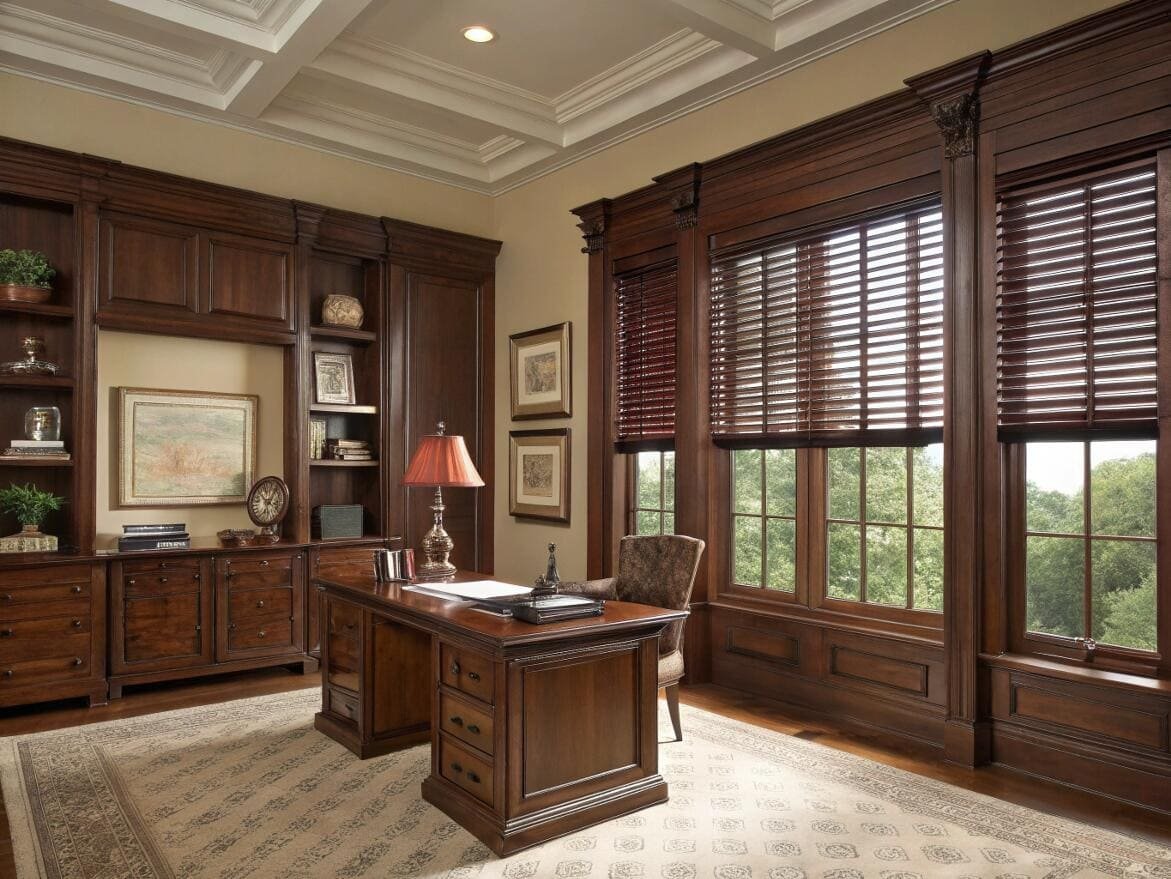
This approach allows you to invest in luxury where it will be seen and appreciated most, while using a cost-effective and functionally superior material where it's needed. For the best specific product, look for real wood blinds made from Basswood. It’s the industry standard known for being lightweight[^5], strong, and having a beautiful, subtle grain that takes stains and paints well. For faux wood, choose a reputable brand that explicitly mentions UV-inhibitors to prevent yellowing. By matching the engineered properties of the material to the environment of the room, you ensure every blind in your home will look great and perform reliably for years to come.
Conclusion
The best choice between real and faux wood is an engineering decision. Match the material to the room's environment—real wood for dry living spaces and faux wood for humid utility areas.
---
[^1]: Discover why faux wood blinds are a practical choice for moisture-prone areas and their durability.
[^2]: Find out why Basswood is the preferred material for real wood blinds due to its lightweight and strength.
[^3]: Explore the unique advantages of real wood blinds, including their aesthetic appeal and lightweight nature.
[^4]: Discover how UV inhibitors protect faux wood blinds from yellowing and extend their lifespan.
[^5]: Understand the impact of blind weight on operation and ease of use.
Partner with VelaBlinds for Your Next Project
Smart window treatments shouldn't be complicated. After working with 500+ distributors and contractors worldwide, I've streamlined the process to get you quality products, competitive pricing, and reliable support - every time.
Why project professionals choose VelaBlinds:
- ✅ Fast, Accurate Quotes - Detailed specs and pricing within 24 hours
- ✅ Transparent Pricing - No hidden fees, volume discounts clearly outlined
- ✅ Quality Assurance - Direct partnerships with certified OEM manufacturers
- ✅ Project Support - Dedicated account manager from quote to delivery
Start your next project:
📧 Quick Quote: Send your requirements to info@velablinds.com
📱 Direct Contact: WhatsApp +86 137 2012 8317
🌐 Browse Solutions: https://velablinds.com/
📁 Product Resources: Access spec sheets, catalogs & project files
Paul Chen, Founder
"I built VelaBlinds to solve the real challenges I faced as a project buyer - long lead times, unclear specs, and unreliable suppliers. Let's discuss how we can power your projects with smarter blinds."
Serving distributors and contractors across North America, Europe, and Australia since 2018.

